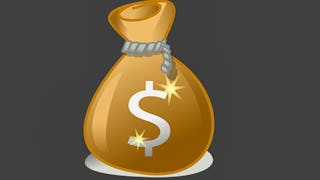Essential Computer Engineering Skills
March 17, 2025
Article



This course is part of Finance Specialization

Instructor: Giovanni Walter Puopolo
Included with 
Recommended experience
Intermediate level
Prior knowledge of the following topics: mathematics, statistics and microeconomics(at undergraduate level) and asset pricing I
Recommended experience
Intermediate level
Prior knowledge of the following topics: mathematics, statistics and microeconomics(at undergraduate level) and asset pricing I
Understand the principles connected to investors' portfolio choices and the criteria that determine the prices of financial instruments
Understand the main functions performed by the financial markets
Analyzing how their introduction influences the households' savings choices and companies' investment in an economy without uncertainty

Add to your LinkedIn profile
16 assignments



Add this credential to your LinkedIn profile, resume, or CV
Share it on social media and in your performance review

The course covers several advanced topics in asset pricing, trading-off risks and return, and portfolio optimization. More precisely, students will first analyze two relevant extensions of the Capital Asset Pricing Model (CAPM) and learn how to determine the corresponding equilibrium in financial markets.
Next, they will learn how to estimate empirically the risk-return relationship predicted by the Capital Asset Pricing Model. Students will also analyze two pricing models alternative to the CAPM. In the Arbitrage Pricing Theory, they will learn how to determine assets expected returns based on multiple risk factors and absence of arbitrage opportunities. In the Consumption Capital Asset Pricing Model, instead, they will learn how to solve the investors' joint consumption/investment decision problem and how to compute the equilibrium asset prices and expected returns in a dynamic pure exchange economy. Finally, the course concludes with a focus on the pricing of fixed income instruments.
By the end of this week you will learn: how to determine the equilibrium in financial markets under two distinct scenarios within the Capital Asset Pricing Model framework. First, you'll explore equilibrium determination when there is an absence of a riskless security. Second, you'll delve into the complexities of equilibrium determination when investors' preferences are dynamic, and stock returns follow a normal distribution.
19 videos3 readings3 assignments
By the end of this week you will learn how to estimate empirically the risk-return relationship predicted by the Capital Asset Pricing Model
17 videos4 readings3 assignments
By the end of this week you will learn how to determine assets expected returns based on multiple risk factors and absence of arbitrage opportunities
24 videos4 readings4 assignments
By the end of this week, you will acquire a comprehensive understanding of determining equilibrium in a collaborative exchange economy, where agents make joint decisions on consumption and financial asset investment. Additionally, you will learn how to compute equilibrium asset prices and expected returns.
22 videos4 readings3 assignments
By the end of this week, you will gain a comprehensive knowledge of fixed income securities, including an understanding of their diverse characteristics, and the ability to assess their pricing and implied returns
22 videos3 readings3 assignments



Founded in 1224, Federico II is the oldest lay University in Europe. With its "Federica Web Learning" Center, it is the leader in Europe for open access multimedia education, and in the world's top ten for the production of MOOCs for providing new links between higher education and lifelong learning. Find out more on www.federica.eu.

Università di Napoli Federico II
Course

Rice University
Course

Coursera Project Network
Course

Columbia University
Course





Unlimited access to 10,000+ world-class courses, hands-on projects, and job-ready certificate programs - all included in your subscription
Earn a degree from world-class universities - 100% online
Upskill your employees to excel in the digital economy
Access to lectures and assignments depends on your type of enrollment. If you take a course in audit mode, you will be able to see most course materials for free. To access graded assignments and to earn a Certificate, you will need to purchase the Certificate experience, during or after your audit. If you don't see the audit option:
The course may not offer an audit option. You can try a Free Trial instead, or apply for Financial Aid.
The course may offer 'Full Course, No Certificate' instead. This option lets you see all course materials, submit required assessments, and get a final grade. This also means that you will not be able to purchase a Certificate experience.
When you enroll in the course, you get access to all of the courses in the Specialization, and you earn a certificate when you complete the work. Your electronic Certificate will be added to your Accomplishments page - from there, you can print your Certificate or add it to your LinkedIn profile. If you only want to read and view the course content, you can audit the course for free.
If you subscribed, you get a 7-day free trial during which you can cancel at no penalty. After that, we don’t give refunds, but you can cancel your subscription at any time. See our full refund policy.
Yes. In select learning programs, you can apply for financial aid or a scholarship if you can’t afford the enrollment fee. If fin aid or scholarship is available for your learning program selection, you’ll find a link to apply on the description page.
Financial aid available,